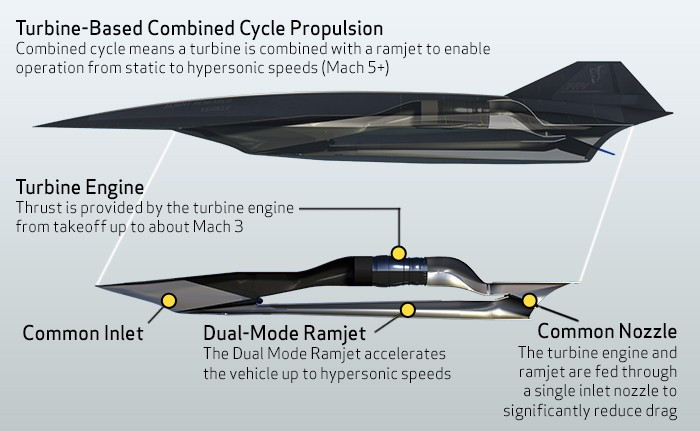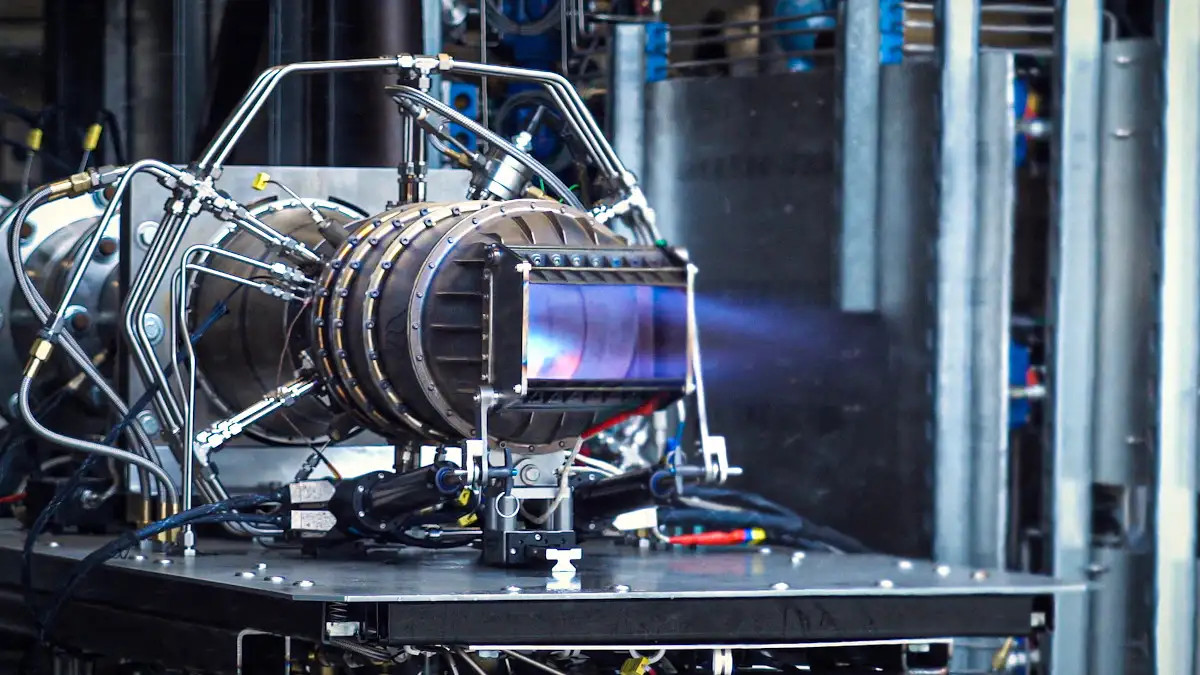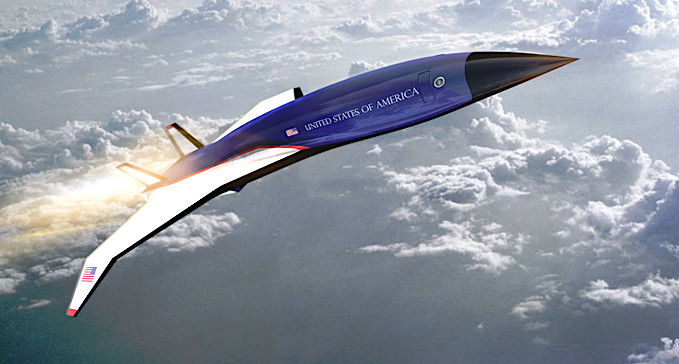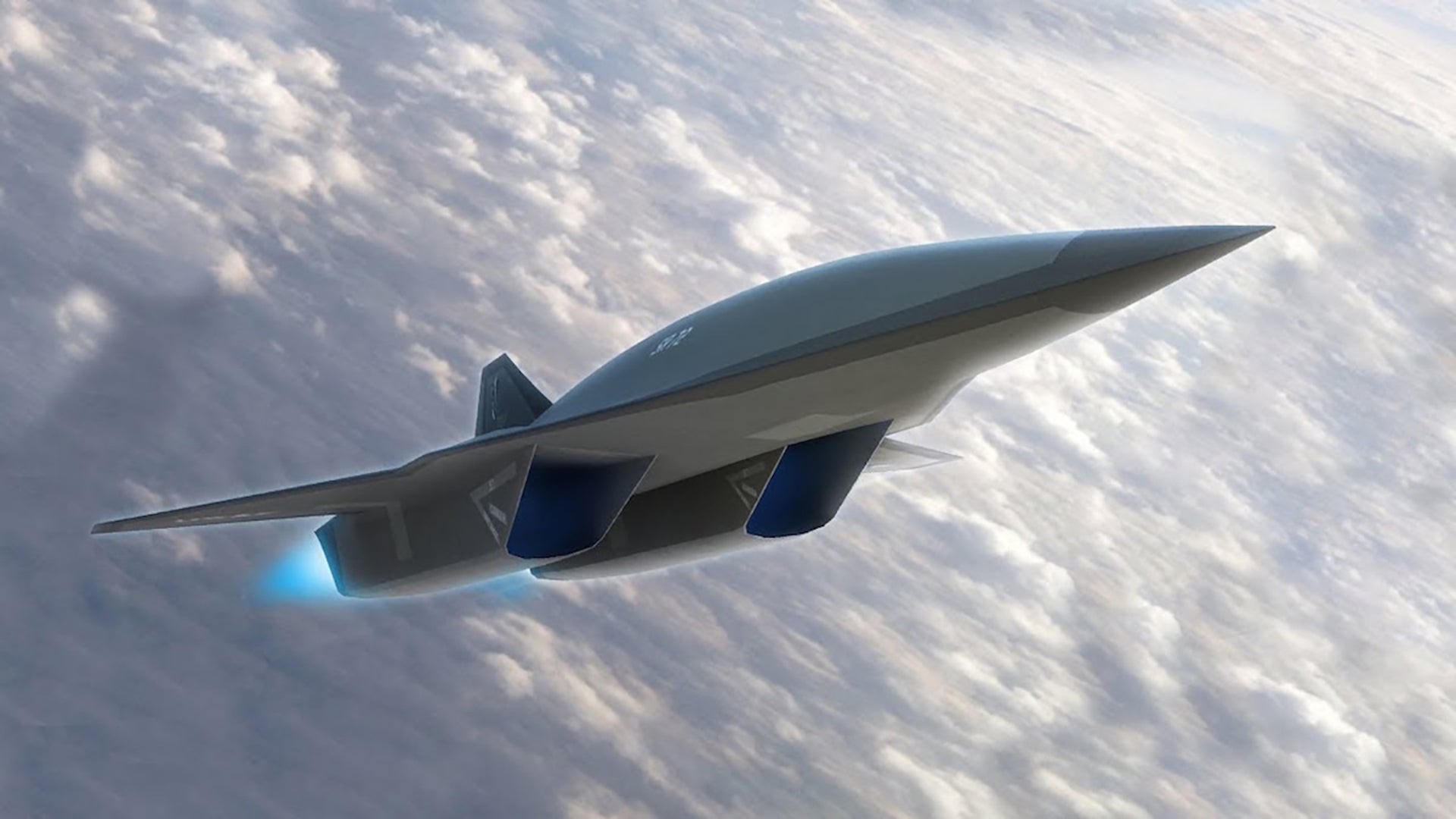The U.S. Air Force’s latest hypersonic development program, called Mayhem, looks to be aimed at acquiring expendable testbeds for new advanced jet engines, including turbine-based combined cycle designs. This type of engine, which blends together the capabilities of traditional jet turbines and high-speed ramjets and scramjets, is seen as a holy grail when it comes to developing viable hypersonic aircraft, such as Lockheed Martin’s in-development SR-72.
Aviation Week
was first to confirm a direct link between Mayhem and this “multi-cycle” engine work for a story it published on Aug. 20, 2020. The Air Force Research Laboratory (AFRL) had first publicly announced the project in a contracting announcement calling for information about a potential “Expendable Hypersonic Multi-Mission Air-Breathing Demonstrator” design on Aug. 12. The Air Force expects the Mayhem demonstrator to be larger than the AGM-183A Air-launched Rapid Response Weapon (ARRW) hypersonic missile and be able to carry at least three separate payloads per flight.
“Mayhem, in its early planning stages, was described as a ‘Multi-Mission Cruiser’ due to the focus on sustained hypersonic flight capabilities independent of potential payloads,” AFRL told Aviation Week. A reference to the “Multi-Mission Cruiser” had appeared in the Air Force’s most recent budget proposal for the 2021 Fiscal Year, which it released in February.
Budget documents say that the Multi-Mission Cruiser effort would involve a “multi-cycle” engine of some kind, though this could refer to a turbine-based combined cycle (TBCC) arrangement or a dual-mode scramjet. Mayhem is “focused on demonstrating advanced scramjet propulsion technologies,” was all AFRL would tell Aviation Week.

Scramjets, as well as ramjets, generally only function properly at high speeds, requiring some kind of separate booster, typically a rocket motor, to accelerate the aircraft or missile to the appropriate velocity first. A dual-mode scramjet is one that is capable of operating efficiently in both subsonic and supersonic regimes, or even hypersonic ones. Hypersonic speeds is generally defined as Mach 5 or above.
A TBCC design is one that combines ramjets or scramjets with regular jet turbines to create a similar situation in which the complete system is capable of functioning at lower speeds.

It’s hard to overstate just how significant it would be to have viable multi-cycle engine designs, especially TBCC arrangements. An aircraft with this kind of engine setup would be able to take off like any other jet, using existing infrastructure, accelerate to supersonic or hypersonic speeds for the middle portion of its flight, and then decelerate back down to land at the other end, again as normal.
Even for an expendable air vehicle, such as a missile, being able to accelerate to supersonic or hypersonic speed without needing a separate rocket booster, could open up new design possibilities. The ability of a military aircraft or missile to throttle between these low and high-speed regimes could also potentially help pave the way for entirely new concepts of operation, such as a low-and-slow flight to the general area followed by a high-speed, high-altitude dash to the objective itself.
It’s also not surprising that the Air Force would want a testbed to support flight testing of these kinds of engines, as well as representative mission payloads, which could experience different effects during high and low-speed flight, as well as the transitions from one regime to another. The service is already acquiring the X-60A, a rocket-powered hypersonic testbed, to help stress test materials and payloads at extreme speeds and conduct other related research.
The Air Force is already performing advanced ramjet and scramjet work, previously revealing that it achieved what it said was record-breaking performance from a scramjet during ground tests last year. Earlier this month, the service handed what was effectively a $1.5 million research and development grant to the Hermeus Corporation, which has been actively testing its own proprietary combined cycle jet engine design. The Defense Advanced Research Projects Agency (DARPA) has also initiated its own multi-cycle Advanced Full Range Engine (AFRE) program.

This is an area of increasing interest around the world, as well. Just today, U.K.-headquartered Rolls-Royce, which manufacturers traditional jets engines, announced it was forming a new partnership with Reaction Engines, another company in the United Kingdom working on combined cycle engines for use on a space-launch mothership, known as a mothership-based two-stage-to-orbit concept, which you can read about in more detail in this past War Zone feature.
It’s not clear whether the Air Force, or any other entity within the U.S. military, has prospective or notional aircraft or missile designs in the works that it could put one of these advanced engines into, at present. Publicly, DARPA’s Hypersonic Air-breathing Weapon Concept (HAWC) cruise missile effort is exploring designs that use a more typical scramjet plus booster configuration. It is expected that follow-on projects to that program will do the same.
“I’m delighted to say that I was wrong,” Will Roper, the Assistant Secretary of the Air Force for Acquisition, Technology, and Logistics, had said in April regarding hypersonic weapons developments. “Scramjet is much more mature and ready to go than I originally thought.”
Notably, Lockheed Martin has also said in the past that its prospective SR-72 successor to the iconic SR-71 Blackbird would use a combined cycle engine arrangement that the company had been developing since the mid-2000s in cooperation with Aerojet Rocketdyne. There had also been talk about a fighter jet-sized demonstrator to prove out this technology, with former CEO Marillyn Hewson saying it could have a price tag of less than $1 billion.

The aforementioned Air Force contract with Hermeus is also specifically focused on exploring potential designs for a hypersonic executive passenger jet. Beyond that, it seems very possible, if not probable that there is additional work on high-speed aircraft and other aerospace vehicles that could make use a multi-cycle jet engine being conducted in the classified realm.

Whatever specific projects the Mayhem demonstrators may ultimately support, they look set to be an important part of the Air Force’s work on game-changing jet engine technology that could have wide-ranging applications.
Contact the author: joe@thedrive.com
